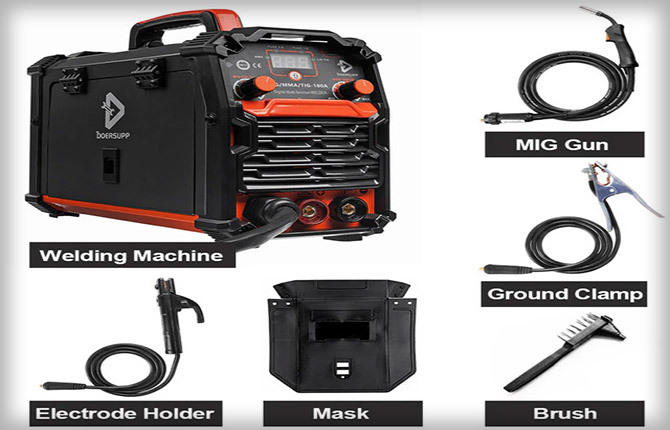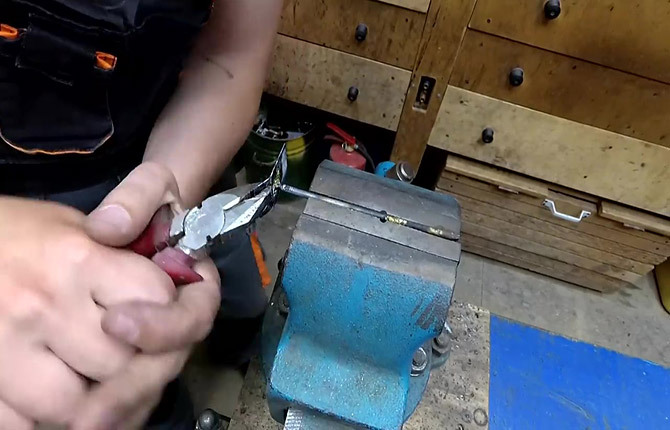A new headset and decided to take up the installation yourself. On the one hand, it is very simple to connect and put the mixer on the sink with your own hands - anyone can handle it. On the other hand, even with some experience, but without knowing the elementary rules, you can do work poorly or completely spoil the product, for example, knocking the thread, bending the carts, etc. Another reason why you still have to contact a plumber -This is the lack of a set of sanitary tools. But this problem is completely solved, because you can always ask something from friends.
We tried to tell as clearly as possible how to install the mixer in the kitchen with our hands safely and correctly.
List of necessary tools and spare parts
Before proceeding with the installation of kitchen plumbing with your own hands, you need to prepare and buy everything you need. You will need:
- Sealing tape FUM - it is better not to take flax tow, as it swells from water, and even then it will be difficult to remove liners;
- Spanner 10 or 11;
- Tubular key - needed for tightening a hard-to-reach nut during installation of the mixer to the sink;

- Mounting kit - it must have rubber sealing rings, i.e. half washers( 2 pcs.), One horseshoe-shaped metal half washer, a stud( 1 or 2) and a nut. This kit is attached to the mixer, but if you wish, you can buy a sealing ring thicker and stronger, as manufacturers do not always include high-quality gaskets in the kit;

- Pliers, small key, screwdriver - sometimes they are also needed;
- A rag, basin and flashlight will also come in handy for you to see everything;
- And finally, the main thing - 2 sanitary connections - are attached to the kit, but it is better to buy others, as the factory ones are often short and made of silumin;
Perhaps, it is worth focusing on liners. Keep in mind that:

- Eyeliners are needed so long that they do not break, but bend in the form of a semicircle, that is, they should not be too long or, conversely, short in the tension. The most common length is 86 cm;
- If the factory connection is too short, it is better not to try to increase it, but to buy a new one;
- Also, do not buy silumin hoses, especially if you bought a silumin mixer - at least the liner must be reliable;
- Installing flexible connections is easier than connecting rigid ones, but they are considered less reliable, so it is better to install them together with tapes with a tap;
- The liner kit must have seals;
- Replacing the old faucet in the kitchen most often involves replacing the old liner, because they also wear out.
Step.1.Dismantling the old faucet and preparing for installation of the
Before you install the faucet in the kitchen, you need to shut off the water( you do not need to shut off the riser) and lay a cloth on the bottom of the sink, just in case, so that small parts do not fall into it,hurt

Of course, replacing the faucet in the kitchen requires dismantling the old faucet. To do this:
- First, disconnect the old hoses from the pipes of cold and hot water with your hands or open-end wrench. Do not forget to put a basin under them and drain the rest of the water, after which the pipe threads must be wiped clean.
- Then, using a tubular wrench, you need to unscrew the clamping nut on the stud( or two studs), which fastens the mixer to the sink( directly below it).When you unscrew this nut, the metal half-washer will come off.
- Now you need to pull the mixer along with the hoses from the hole in the sink. Well, that's all, you can proceed to the next step.
Step 2. Assembling the mixer and liner
Installing a mixer in the kitchen begins with assembling it, that is, connecting to flexible hoses or rigid connections.

- If you have a two-part mixer as in the photo on the right, then, most likely, you first need to collect it. To do this, insert the spout( valve) into the body to the restrictive ring and manually, without too much tightening, fasten them to each other.
Now we take the FUM tape and slightly wrap it with the end of the liner.
- Wrapping the tip tape is not necessary, as the hose already has a gasket.
Then we insert the end of the first eyeliner into the corresponding hole in the mixer as in the photo below and fasten it first with our own hands, and then slightly tighten the spanner with a 10-key. In the same way, fasten the second hose.


- It is very important not to tighten too much, otherwise the lining will be damaged! But not to endure too bad.
And finally, fasten the pin-pin( or 2 studs) with the thread up into the opening for him. Our assembled mixer is almost ready to install. It remains to push both leads into the sealing ring, bring it to the base of the mixer body and fix it there as shown in the photo on the right.
Step 3. Install the mixer on the sink
And now it's time to put the mixer on the sink.
- By the way, it is more convenient to install the mixer on the still non-built-in sink, since working under the countertop is not very convenient to work with( in this case, installation is done this way).
We push the ends of the hoses into the sink bore, put the mixer in and ask someone to hold it in order for you to be comfortable.
Then from the bottom under the table top or from the bottom of the removed car wash we put on the second rubber presser washer on the liner. The result will be that the two rubber seals will protect the body and the top and bottom of the shell. Now we also attach the horseshoe-shaped metal washer( photo below).

Bottom we put on the stud-nut and tighten it with:
- Tubular key, in case you need to replace the mixer on the already installed sink. The photo below shows the mount below.

- with the Rozhkovy key - in case you install the mixer on a new or removed sink. Of course, after that you need to install the sink itself on the countertop and only then proceed to connect the mixer to the pipes of hot and cold water.
- Tighten the nut firmly, but not too tight!
Step 4. Connecting to
pipes Finally, we connect the hoses to the water outlet pipes considering that:
- Hot water outlet is from the right pipe;
- Conclusion cold - from the left pipe.

- Sometimes cold water is discharged through a pipe that is on top, and hot water through a pipe from below, as in the photo below.

- It is advisable to install pipes with taps on the pipes if you use flexible hoses.
Step 5. We check the work of
Well, that's all, it remains to check the connection is correct, first letting hot and then cold water. If there are no leaks, and the wiring is curved smoothly in the shape of the letter U, then you have done it. If leaks have occurred, then, most likely, this means that the seal has been damaged somewhere - you have to remove and replace it.
And how to change the mixer in the kitchen if the stainless steel sinkor the landing hole was damaged? Then it is possible and necessary to make auxiliary details with our own hands, as the authors of the following videos did.
Read also:
- Choosing a kitchen faucet
- Do-it-yourself kitchen faucet repair
- Installing a kitchen siphon in 4 steps
- Choosing a kitchen sink in 5 simple steps


